

Sports
Athletics
Athletics
Athletics is derived from the Greek word "athlos" meaning "contest and may refer to Track and field athletics.
It is not a singular sport and the term is used comprising a group of athletic events which normally involve running, walking, jumping or throwing.
The Asian Track and Field Championships were originally planned at the 1962 Asian Games through the initiative of Major General Aziz Salleh the Chief of the Indonesian Federation (PASI), but went a-begging by the "emergence" of the ill conceived first and last Games of the Emerging Forces (GANEFO).
The idea to hold the Championships was revived by the Malaysian A.A.U. President, Tan Sri Mohamed Ghazali Shafie, at the 1966 Asian Games at Bangkok, which again met no better fate as circumstances outside the control of athletics idealist intervened.
At the 1970 Asian Games, the Punjab State Sports Minister, Sardar Umrao Singh, took up the Challenge and plans for the First Asian Championships at Delhi were finalized with Mr. R.L. Anand appointed Director of the Organisation when political developments in the sub-Continent thrust the plans not only out of gear but out of sight for another two years.
However, they kept up the tempo and though unable to hold the Championships, they called for a meeting of the Asian Athletic Team officials at the 1972 Munich Olympic Games. It was there that Governor Jose C. Sering, President of the Philippines Track and Field Association (PATAFA) took up the challenge and history was made when the First Asian Track and Field Championships got off the launching pad and was held at the Marikina Stadium near Manila in November 1973.
Athletics was incorporated into the Asian Games in 1951 and is a compulsory sport.
List of disciplines
- Athletics
- Athletics, Indoor
- Beach Athletics
- Combined
- Field
- Road
- Track
Athletics includes many different events, but all are based on the principle of simple physical competition. The sport is the perfect expression of the Olympic motto: Citius, Altius, Fortius – Faster, Higher, Stronger.
It requires athletes to run faster, throw further, jump higher and longer than everyone else. And people have taken part in such contests since the start of recorded history.
The first official Athletics competitions took place at the ancient Olympic Games, and the sport developed through public fairs and festivals around the world.
List of events
-
men
-
100M
-
HURDLES 110M
-
400M
-
HURDLES 400M
-
800M
-
1500M
-
STEEPLECHASE 3000M
-
5000M
-
10000M
-
MARATHON
-
RACE WALKING 20KM
-
RACE WALKING 50KM
-
RELAY 4X100M
-
RELAY 4X400M
-
SHOT PUT
-
DISCUS THROW
-
HAMMER THROW
-
JAVELIN THROW
-
LONG JUMP
-
TRIPLE JUMP
-
HIGH JUMP
-
POLE VAULT
-
DECATHLON
-
60M
-
3000M
-
HURLDES 60M
-
200M
-
HALF MARATHON
-
1500M WHEELCHAIR
-
PENTATHLON
-
HURDLES 200M
-
STEEPLECHASE 2000M
-
HEPTATHLON
-
-
women
-
POLE VAULT
-
60M
-
3000M
-
HURLDES 60M
-
HALF MARATHON
-
10000M WALK
-
80M HURDLES
-
PENTATHLON
-
STEEPLECHASE 2000M
-
HURDLES 110M
-
100M
-
HURDLES 100M
-
200M
-
400M
-
HURDLES 400M
-
800M
-
1500M
-
STEEPLECHASE 3000M
-
5000M
-
10000M
-
MARATHON
-
RACE WALKING 20KM
-
RELAY 4X100M
-
RELAY 4X400M
-
SHOT PUT
-
DISCUS THROW
-
HAMMER THROW
-
JAVELIN THROW
-
LONG JUMP
-
TRIPLE JUMP
-
HIGH JUMP
-
HEPTATHLON
-
-
boys
-
TRIPLE JUMP
-
100M
-
HURDLES 110M
-
1500M
-
400M
-
HURDLES 400M
-
RELAY 4X200M
-
800M
-
DISCUS THROW
-
HIGH JUMP
-
JAVELIN
-
LONG JUMP
-
POLE VAULT
-
SHOT PUT
-
-
girls
-
SHOT PUT
-
100M
-
HURDLES 100M
-
1500M
-
400M
-
HURDLES 400M
-
RELAY 4X200M
-
800M
-
DISCUS THROW
-
HIGH JUMP
-
JAVELIN
-
LONG JUMP
-
POLE VAULT
-
TRIPLE JUMP
-
-
mixed
-
MIXED RELAY 4X400M
-
There are two seasons for track and field. There is an indoor season, run during the winter and an outdoor season, run during the spring.
Most indoor tracks are 200 meters and consist of four to six lanes. There are also some 150 meter indoor tracks, and others as small as 120 meters have been used.
Some "oversize tracks" (larger than 200 meters) are popular for American collegiate athletics despite the fact that they are not considered valid for setting indoor records. Often an indoor track will have banked turns to compensate for the tight radius of the turns.
The banking can help prevent injuries to the athlete, while also promoting higher speeds.[citation needed] In an indoor track meet athletes contest the same track events as at an outdoor meet, with the exception of the 100 m and 110 m/100 m hurdles (replaced by the 55 or 60 m sprint and 55 or 60 m hurdles at most levels, or the 45 m sprint and hurdles at the high school level), the 10,000 m run, 3,000 m steeplechase, 400 m hurdles.
Indoor meets also have the addition of a 3,000 m run normally at both the collegiate and elite level, instead of the 10,000 m. The 5,000 m is the longest event commonly run indoors, although there are situations where longer distances have been raced.
In the mid 20th century, there was a series of "duel" races on Madison Square Garden's indoor track, some of which featured two men racing a marathon (26.2 miles).
However, this is an extremely rare occurrence, for obvious reasons. In some occasions, there may also be a 500 m race instead of the open 400 m normally found outdoors, and in many college championship races indoors both are contested.
In field events, indoor meets only feature the high jump, pole vault, long jump, triple jump, and shot put (weight throw). Due to space limitations, these events take place on the infield, within the circumferential track.
The longer throws of javelin, hammer and discus are added only for outdoor meets, as there is normally not enough space in an indoor stadium to house these events.
List of events
-
men
-
INDIVIDUAL
-
1500M
-
3000M
-
4X400M RELAY
-
400M
-
60M
-
60M HURDLES
-
800M
-
HEPTATHLON
-
HIGH JUMP
-
LONG JUMP
-
POLE VAULT
-
SHOT PUT
-
TRIPLE JUMP
-
-
women
-
1500M
-
3000M
-
4X400M RELAY
-
400M
-
60M
-
60M HURDLES
-
800M
-
HIGH JUMP
-
LONG JUMP
-
PENTATHLON
-
POLE VAULT
-
SHOT PUT
-
TRIPLE JUMP
-
-
mixed
-
4X400M RELAY
-
List of events
-
men
-
60M
-
CROSS COUNRTY (INDIVIDUAL)
-
CROSS COUNRTY (TEAM)
-
HIGH JUMP
-
LONG JUMP
-
SHOT PUT
-
TRIPLE JUMP
-
4X60M RELAY
-
-
women
-
CROSS COUNRTY (TEAM)
-
HIGH JUMP
-
LONG JUMP
-
SHOT PUT
-
TRIPLE JUMP
-
4X60M RELAY
-
60M
-
CROSS COUNRTY (INDIVIDUAL)
-
-
mixed
-
8X60M MIXED RELAY
-
In Decathlon competitions for men and Heptathlon competitions for women, athletes take part in a range of different Running, Jumping and Throwing events – 10 for men, seven for women.
They win points according to the times they run and the distances they throw and jump. Competition takes place over two days; the winner is the one with the highest total of points at the end.
Field: Jumping and Throwing events. Jumping: In High Jump, you have to get over a bar that is raised each time you succeed. You get three attempts at every height, and the winner is the one who clears the bar at the greatest height.
Pole Vault follows the same rules, but athletes use a long pole to help launch themselves into the air. In Long Jump, athletes sprint down a runway before jumping as far as they can into a sand pit.
Triple Jump looks very similar, but you have to complete a hop and skip before you make your jump.
All these events require a combination of speed and smooth technique.
Throwing: The throwing disciplines are Shot Put, Javelin, Discus and Hammer. Competitors get six attempts to throw the object as far as they can into a field. Speed, strength and technique are needed.
Marathon and Walking races that take place outside the stadium.
Track: Running events within the stadium. Running and Walking races are held over distances ranging from 100m to 50km.
Apart from the Marathon and Race Walk events, which take place on the road, Running events are held in the stadium, on a 400m oval track.
Most of the racing is done on the flat, but Hurdles and Steeplechase competitions require athletes to jump over barriers on the way to the finish line. To succeed it takes speed, strength and stamina – as well as a good race strategy.
Related links
Sports Committee
The Sports Committee consist of one Chairman and a minimum of five members. The Chairman, nominated by his NOC, will be elected by the GA, while the Members preferably representing the 5 zones of t...
Sports and Environment Committee
The Sports and Environment Committee consist of One Chairman and Five Members. The Chairman, nominated by his NOC, will be elected by the GA, while the Members preferably representing the 5 zones o...
Sports for All Committee
The Sports for All Committee shall consist of One Chairman and Five Members. The Chairman, nominated by his NOC, will be elected by the GA, while the Members preferably representing the 5 zones of ...
Sports Federations
-

Asian Federation
Asian Athletics Association
-

International Federation
WORLD ATHLETICS



















